Of all modern firearm actions, probably none is as mysterious as the roller-delayed blowback.
Yes, we’ve heard of it, and yes, it’s good, but…why?
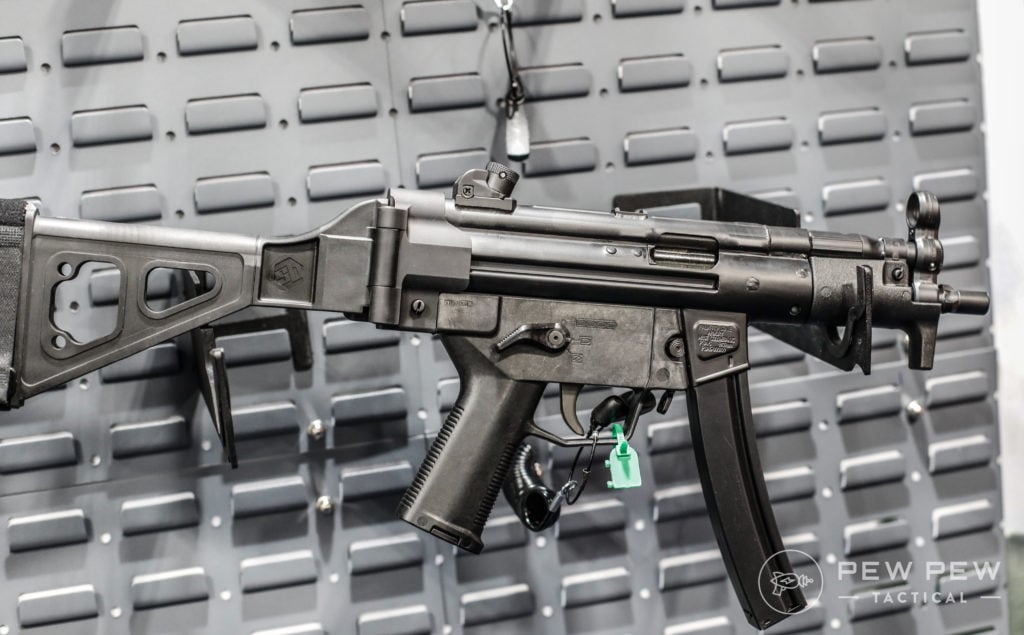
I’m so glad you asked.
Today, we’re going to demystify the roller-delayed blowback action.
We’ll go over how exactly this action works and why it’s so desirable.

Then we’ll look at some of the more interesting roller-delayed guns currently available in case you want to pick up one for yourself.
Let’s get to it!
THE QUICK LIST
-
Best Lightweight Option
-
Editor’s Pick
-
Best Vintage Option
-
Best G3 Clone
-
Most Affordable
-
Best MP5 Clone
-
Best High End
Table of Contents
Loading…
Direct Blowback vs. Roller-Delayed
First, to understand roller-delayed blowback guns, we need to talk about plain ole, normal direct blowback guns.
In a direct blowback firearm, you have a heavy bolt and usually an equally hefty spring that keeps the chamber sealed after firing.
The spring keeps the bolt forward and the chamber sealed when the gun is in battery and ready to fire, and for a short amount of time after firing.
After the round fires, the pressure in the chamber increases while the round moves down the barrel.
Eventually, that pressure is enough that the bolt moves back, and the chamber opens.
This ejects the spent cartridge as the bolt moves to the rear.
At which point, the spring pushes the bolt back forward, where it scoops another round off the top of your magazine and chambers it, allowing the process to be repeated.
Benefits of Direct Blowback
This is one of the simplest self-loading actions we humans have devised, and it’s also one of the cheapest.

Direct blowback is easy to make work, and there are relatively few moving parts, making it fairly reliable as well, especially if you have a dirty gun.
It does have its downsides, though.
Cons to Direct Blowback
For one, the heavy bolt presents an issue.
We don’t like reciprocating mass in our firearms because that moving mass causes things like recoil and muzzle flip.
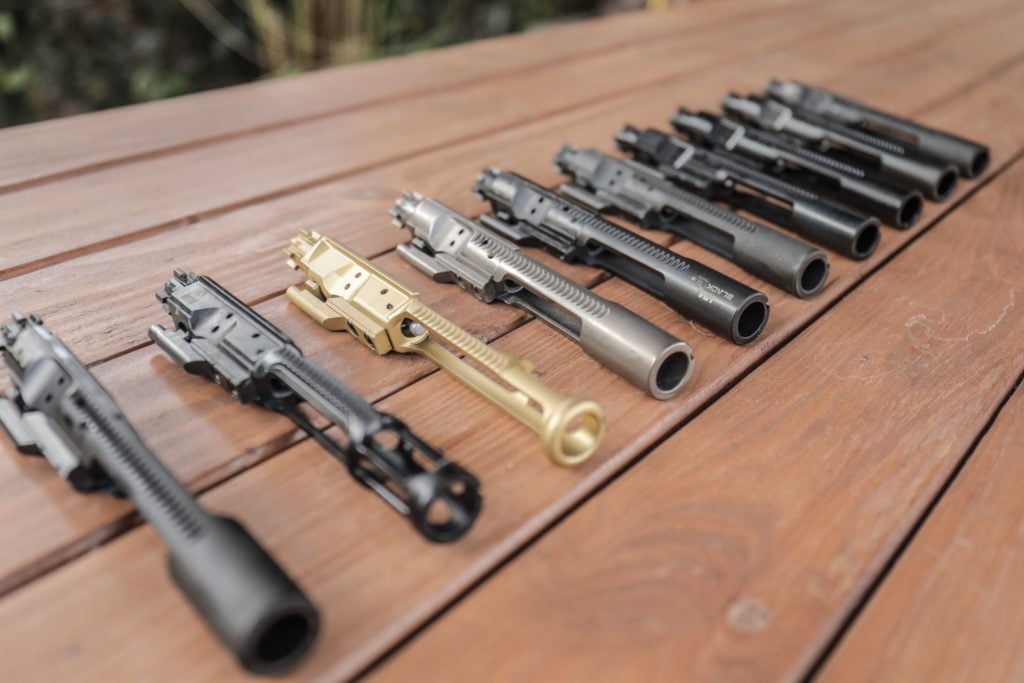
Many people, particularly those focused on accuracy like competition shooters, prefer lighter buffers in their AR-15s, or lightened slides on their handguns for this reason.
Less mass moving back and forth means less recoil.
If you have a heavy bolt and an equivalently high-powered spring moving around, this can make recoil more difficult to manage.
Beyond that, the weight of that bolt and spring are very finely calibrated, and modifying your gun can throw things out of whack.
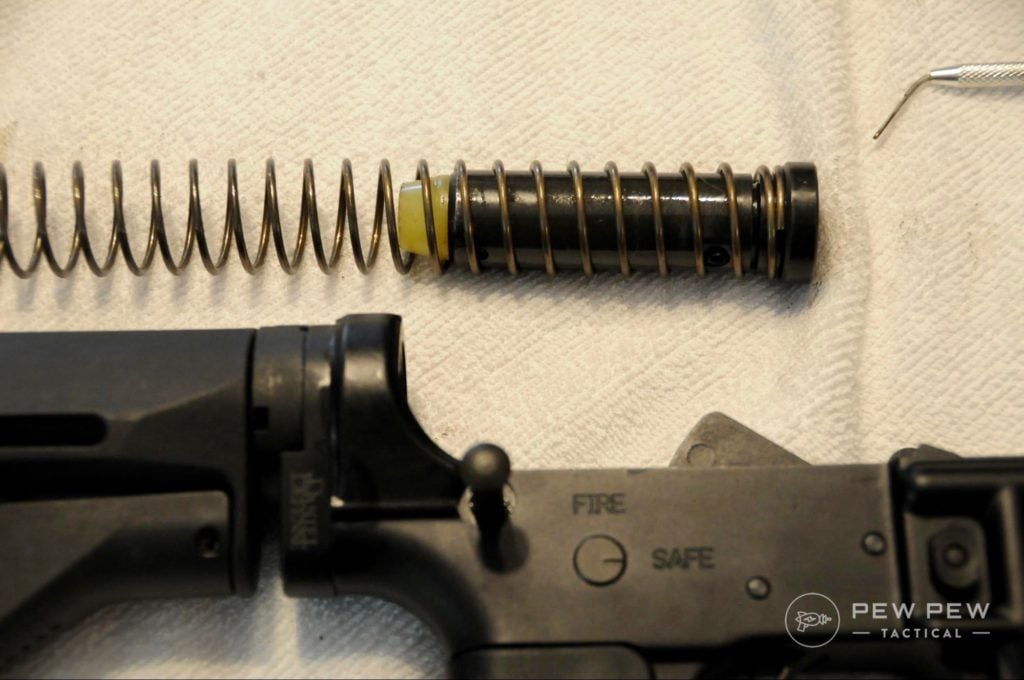
It can do weird things like increase the cyclic rate of full-auto firearms and port pop — that loud pop you get from the ejection port with a suppressor. That sort of defeats the purpose of the suppressor, am I right?
This all happens because a longer barrel or an added suppressor increases that all-important chamber pressure and causes the bolt to unlock further along the pressure curve.
Thus, giving you that pop of escaping gas.
Roller-Delayed Blowback
Introducing a roller delay to this system fixes many of these issues.
When you chamber a round in a roller-delayed blowback, the bolt head picks it up and chambers it like normal.
Then, the bolt carrier spring pushes on a special locking piece, which forces two round rollers on the bolt head into a special space in the receiver called the trunnion.
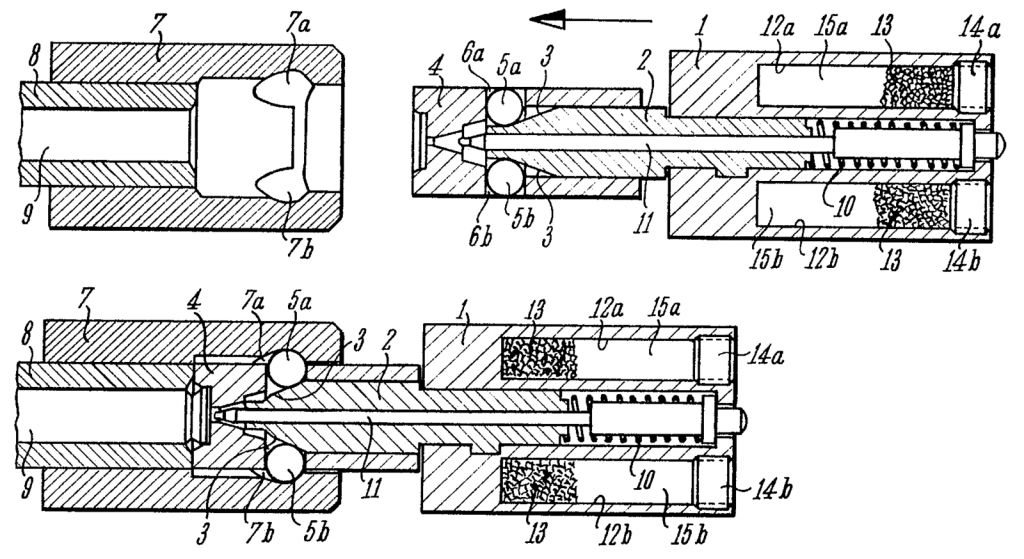
Now, our bolt is locked closed because of the bolt carrier spring holding the locking piece forward, which holds the two rollers in place.
The action will stay like this as long as the chamber pressure is low.
The actual recoil spring isn’t really doing a whole lot at this point.

Once you fire off a round, a lot of things are going to happen very, very fast. Like, “faster than a speeding bullet” fast.
First, the round begins moving down the barrel, which causes pressure to begin building in the chamber.

Eventually, that mounting pressure reaches such a level that the bolt is going to want to move to the rear. This puts pressure on the rollers.
The rollers then squeeze together against the angled head of the locking piece and come out of their little pockets in the trunnion.
Because of the delay caused by the rollers, the chamber pressure begins to drop. It drops much more gradually compared to the sharp peak and drops you get with a standard blowback action.
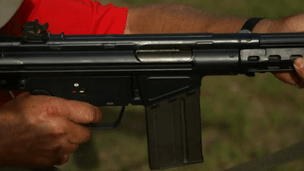
Once the pressure is great enough to move the bolt, you still have a little bit of time while the rollers disengage.
At this point, the bolt head is unlocked from its position. Nothing holds it in place except the recoil spring.
A roller-delayed spring is much less powerful than the one you’d need in an equivalent direct-blowback firearm.
The bolt then travels to the rear, ejects the cartridge, and the bullet goes off to hit your target exactly where you were aiming. Then the recoil spring pushes the bolt carrier back forward to resume the process all over again.
Roller-Delayed Advantages
There are some serious advantages to doing things this way.
First, you have less reciprocating mass inside the gun, and it’s moving at a much lower velocity.
As we discussed before, this means you have less felt recoil and muzzle flip — never a bad thing.

Next, you’ll have a much easier time suppressing a gun with this style of action.
The MP5 is probably the poster child of the roller-delayed blowback action.
It’s hard to find a gun that suppresses better than that, particularly in terms of performance on the shooter’s end.
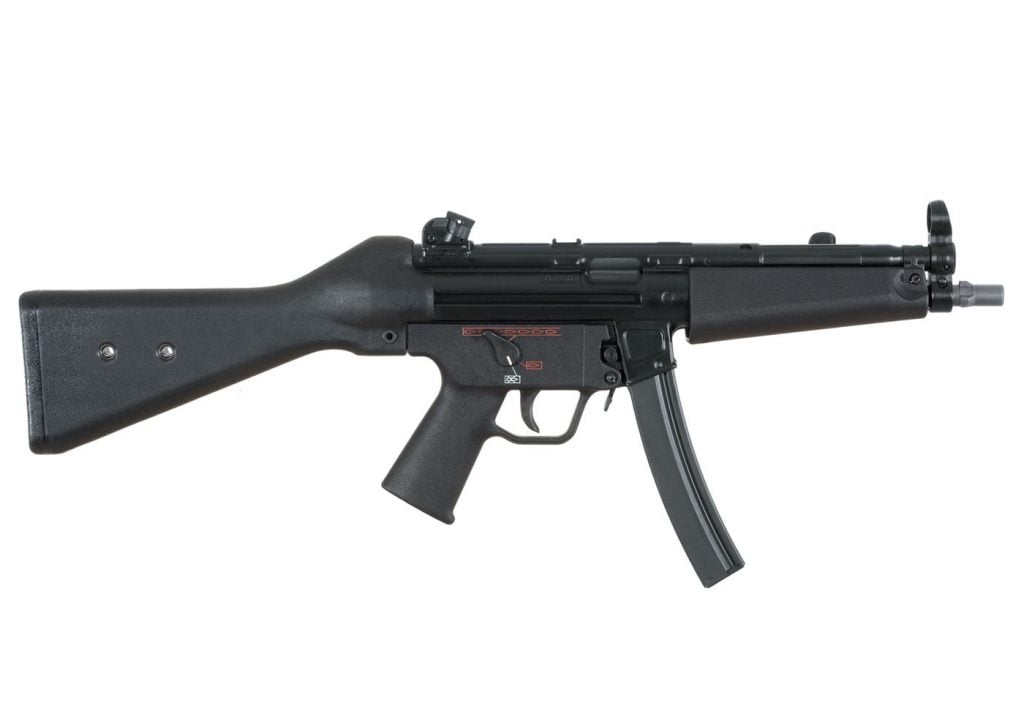
Because you’re opening the chamber at much lower pressure levels, you get no port pop. That means no pain in your delicate little ears and less chance of a living target being able to triangulate what exactly is going on.
This is great for both tactical shooters and hunters alike.
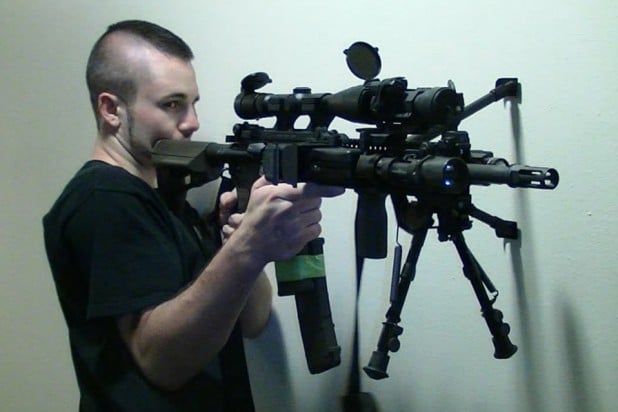
Finally, since there’s no gas system, there’s also no gas to be blown back into your face.
Anyone who has ever fired a poorly-tuned suppressed gun will tell you it’s precisely zero fun at all.
Hot carbon and expanding super-heated ignition gases are really not great for your eyeballs, let me tell you.
Roller-Delayed Issues
So why isn’t every gun a roller-delayed blowback these days? Excellent question.
The simple answer is a direct blowback gas system tends to work better for rifle cartridges.
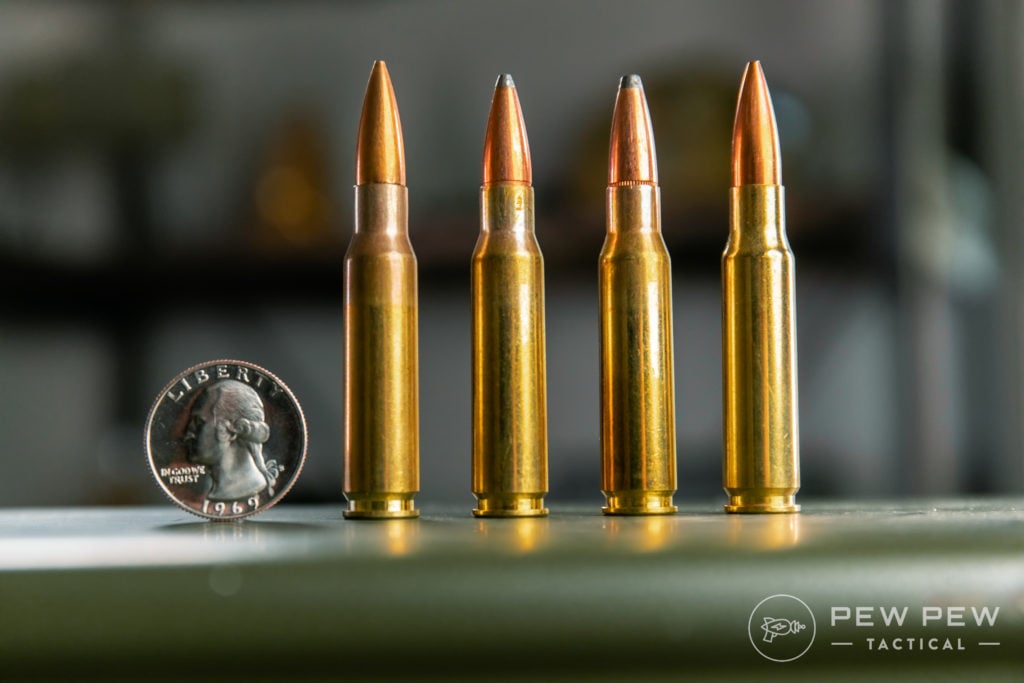
With roller-delayed blowback, you ditch any adjustability.
Since there is no gas system, you can’t fiddle with things as much as you can in a direct blowback gas system.
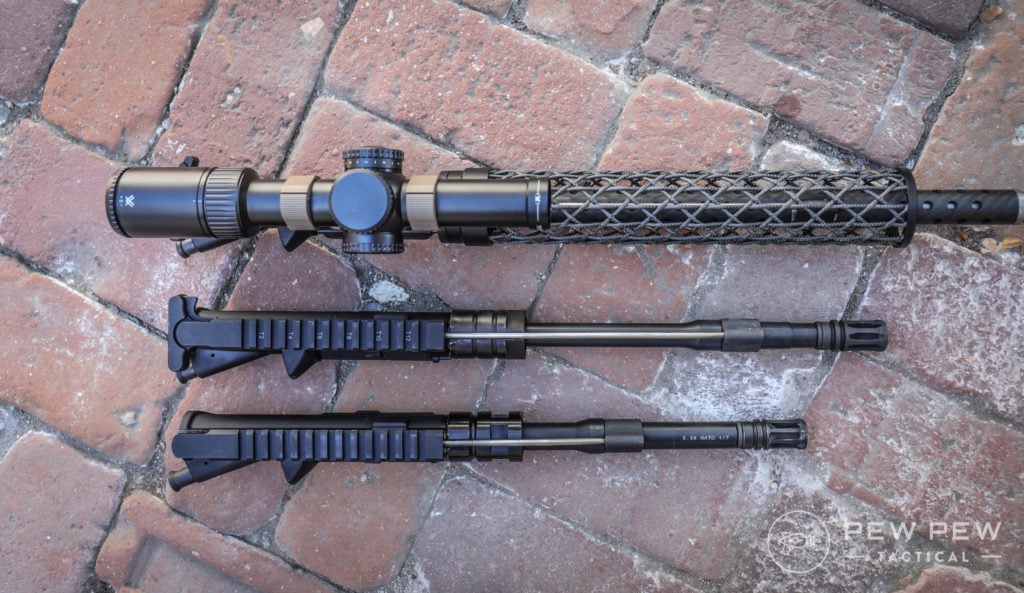
In other words, any changes in ammo, barrel length, or the addition or removal of a suppressor changes the cyclic rate and lock time of your gun. Adversely, this leads to some major reliability issues you can’t really compensate for.
So, rollies are pickier on ammo.
You can change out the locking piece for one with a differently angled head. But that’s something you need a workbench to do.
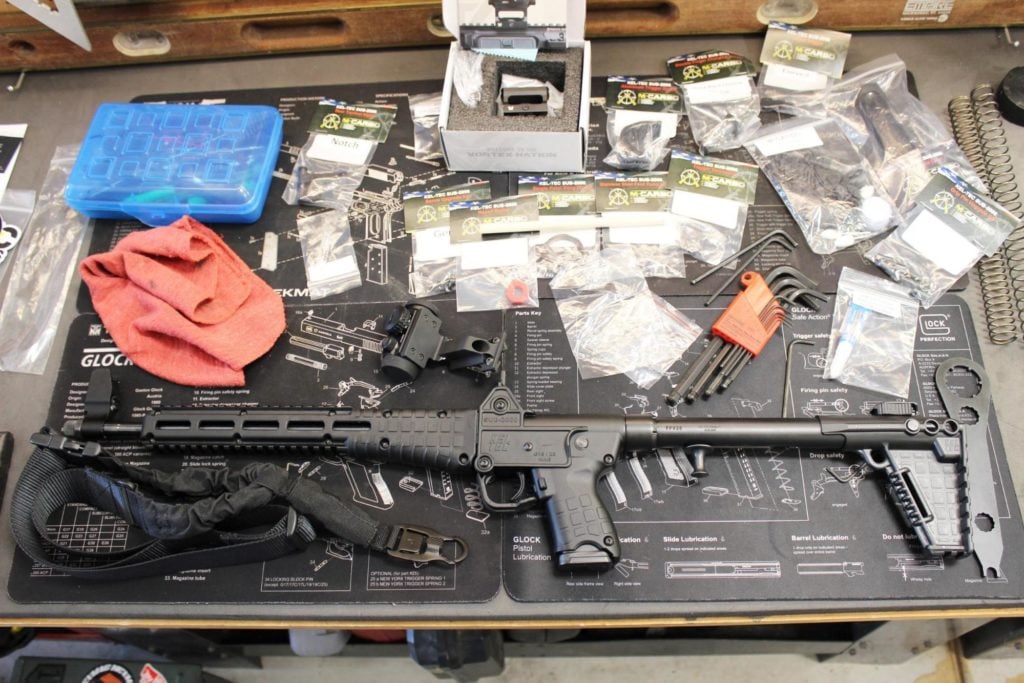
Ideally, you want an experienced armorer to handle that process.
Yes, it can be done by a determined person armed with the right tools and access to YouTube. But do you want to risk messing something up?

The other issue you have is that the roller and the locking piece can and will wear down, which will require replacement much sooner. At least sooner than you’re likely to replace anything on an AR-15.
Once those pieces start to wear, you’ll need more chamber pressure to actually disengage the locking piece.
That said, roller-delayed guns are pretty cool, not to mention iconic in pop culture.
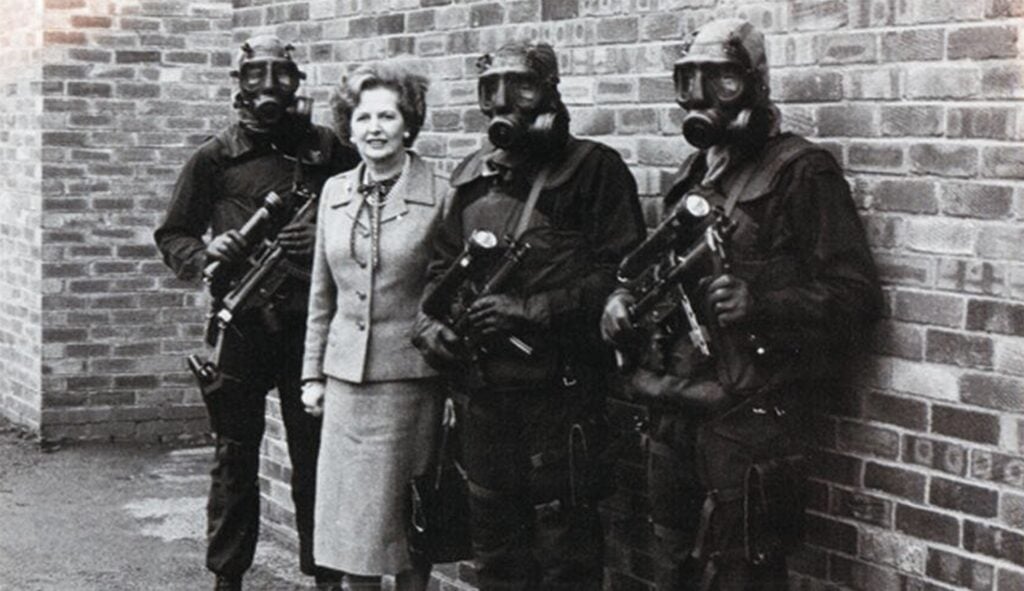
Roller Locked vs. Roller-Delayed
Before we unleash some of the best roller-delayed models upon you, it’s worth mentioning that “roller locked” is sometimes mistakenly used in place of roller-delayed.
In reality, these are two different systems.

Again, roller-delayed systems simply delay the opening of the bolt.
On the other hand, roller-locked systems lock the bolt to the barrel/extension. As such, these systems rely on recoil or a gas piston to unlock and cycle the action.
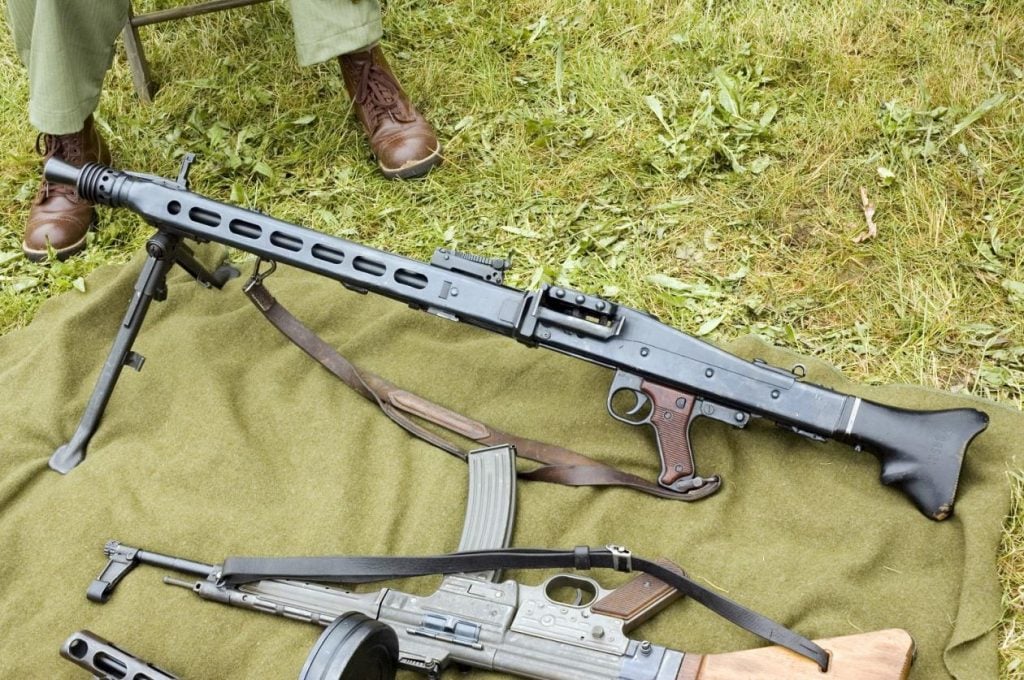
A good example of a roller-locked model is the MG42 and Czech vz.52 pistol.
Best Roller-Delayed Blowback Guns
Now that we’ve talked a little about how these guns work, as well as some pros and cons, let’s look at the guns themselves.
So, there aren’t a ton of rollies out there. But some iconic roller-delayed blowback options do exist on the market.
1. Angstadt Arms MDP-9
Announced in January 2020, the Angstadt Arms MDP-9 is a lightweight, compact roller-delayed option.
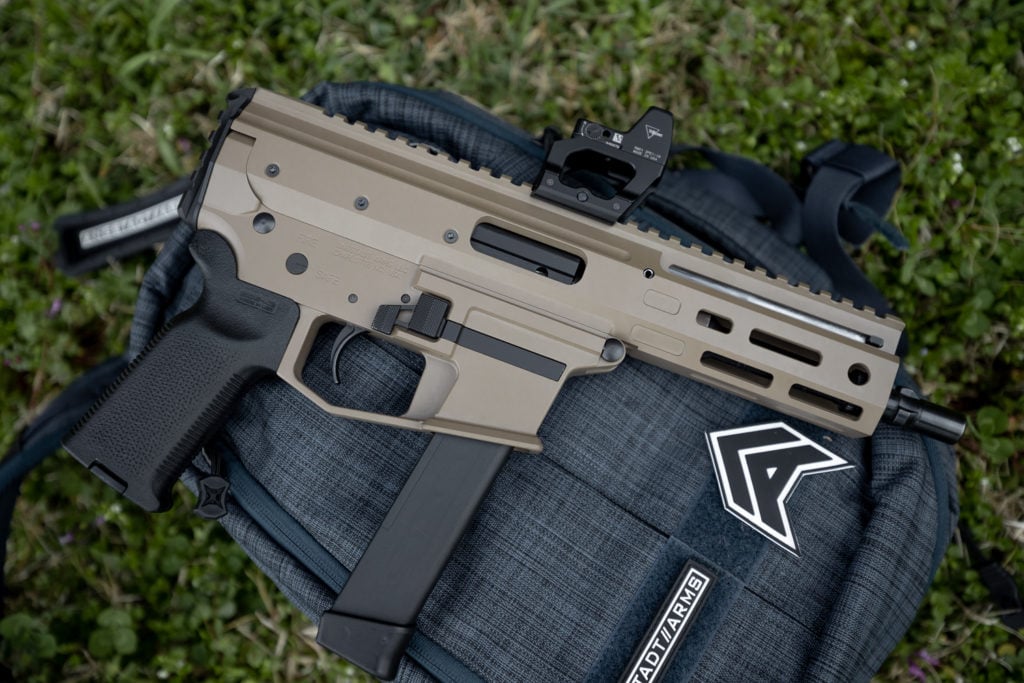
It’s chambered in 9mm and measures 14 inches in overall length, and weighs just 3.6 pounds.
The MDP-9 is a compact model that can easily slip into a backpack or sling bag for easy toting to the range. It features last round bolt hold open and an extended mag release to make mag changes a bit easier.
Prices accurate at time of writing
Prices accurate at time of writing
-
25% off all OAKLEY products - OAKLEY25
Copied! Visit Merchant
Even better, the MDP-9 runs on Glock 9mm double-stack mags. We love that feature because it keeps overall costs down and gives you plenty of spare mags.
Prices accurate at time of writing
Prices accurate at time of writing
-
25% off all OAKLEY products - OAKLEY25
Copied! Visit Merchant
2. Grand Power Stribog SP9 A3S
If you want to get into roller-delayed without totally going broke, Grand Power offers a decent option at an affordable price.
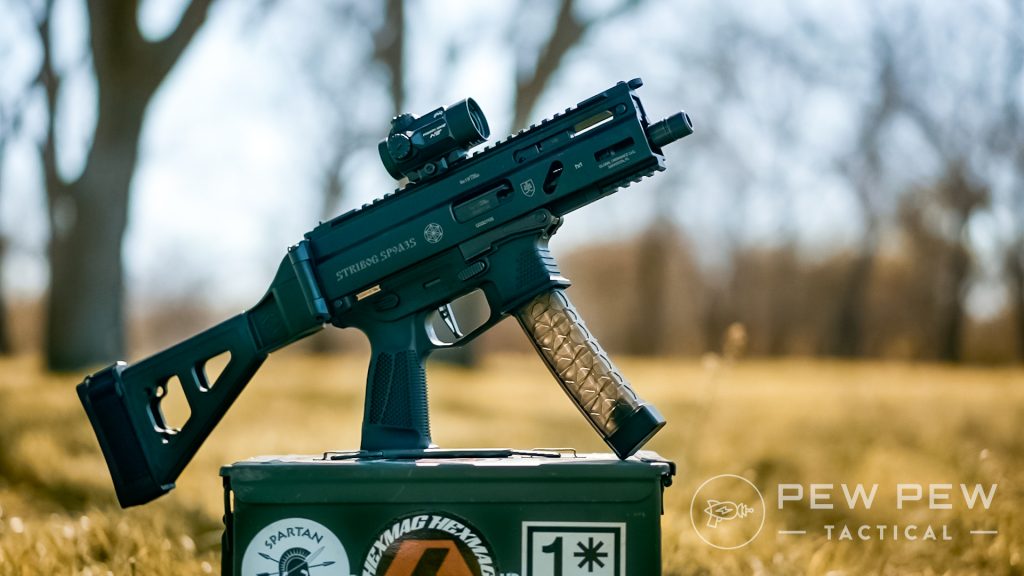
The Stribog SP9 A3S is a roller-delayed 9mm that is decently reliable, accurate, and small enough to stick in a backpack for range day.
This model is very subgun-like and clearly takes cues from HK’s MP5. Controls are ambidextrous, meaning lefties can get in on the fun too.
Prices accurate at time of writing
Prices accurate at time of writing
-
25% off all OAKLEY products - OAKLEY25
Copied! Visit Merchant
The SP9 A3S feels pretty sturdy in hand and pairs a polymer lower with an aluminum upper.
A Picatinny rail runs the length of the top and a small portion under the barrel. M-LOK slots can also be found on this gun, so go crazy mounting what you want.
A 30-round capacity means you got plenty of rounds to plink, and you’ll have a blast doing so. The SP9 A3S is fun!
You can see more on the SP9 in our video review below or read the article itself.
3. StG45
Okay, so this one isn’t exactly in production anymore, but we’d be remiss to not mention it…especially since this is the model the roller-delayed blowback action that was originally developed for.
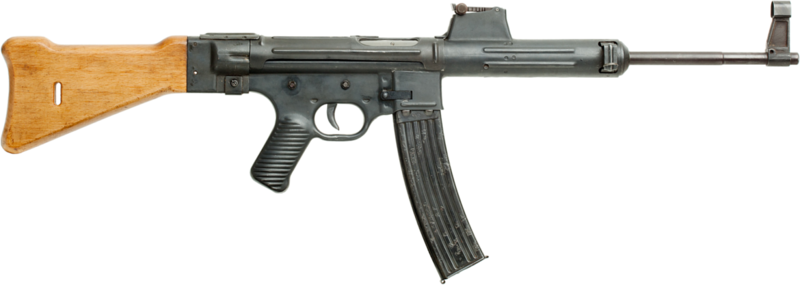
As U.S. and Allied forces began to forcefully wind down the German Wehrmacht’s ability to continue the war effort towards the end of WWII, several German engineers — many of them forced to work against their will — worked on new firearm designs.
One of the last of these was the StG45, developed by Mauser.
This rifle, firing the 7.92x33mm Kurz cartridge, included the roller-delayed blowback design for the first time. The original patent by Mauser’s Wilhelm Stähle and Ludwig Vorgrimler specifically reference it.
It’s very much out of production these days, so if you happen to find one of the 50 or so rifles that were ever produced, hang on to it.
It’s worth something.
BUT…PSA announced at SHOT Show 2023 that they will soon be releasing their own version of the STG-45’s sibling, the STG-44.
You can check out our Instagram post about it below or read more in the Best Guns of Shot Show 2023.
4. CETME Model 58 Rifle and CETME Sporter
After the war, Ludwig Vorgrimler went on to develop several other firearms, including the now-famous Spanish CETME Model 58 — also called the CETME Rifle.
CETME is short for Centro de Estudios Tecnicos de Materiales Especiales, a Spanish arms manufacturer.
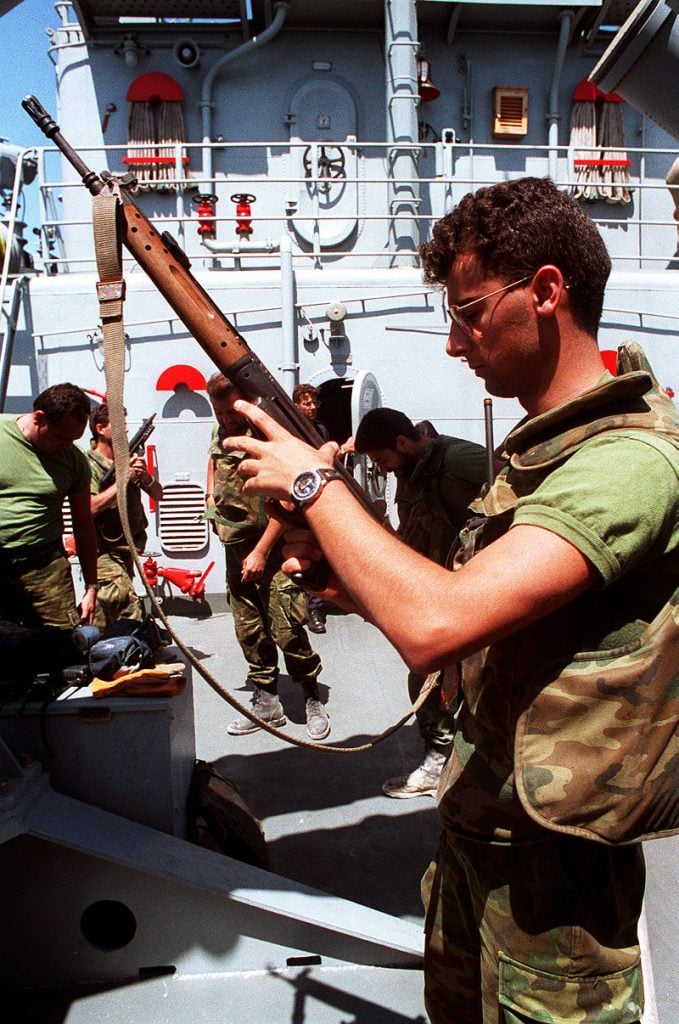
This design is, perhaps unsurprisingly, based heavily on the StG45 that Vorgrimler worked on previously.
However, the CETME incorporates several key upgrades and changes, including a fluted chamber design that helped prevent cases from becoming stuck.
This 7.62x51mm NATO battle rifle was originally chambered for the 7.92x41mm CETME cartridge.
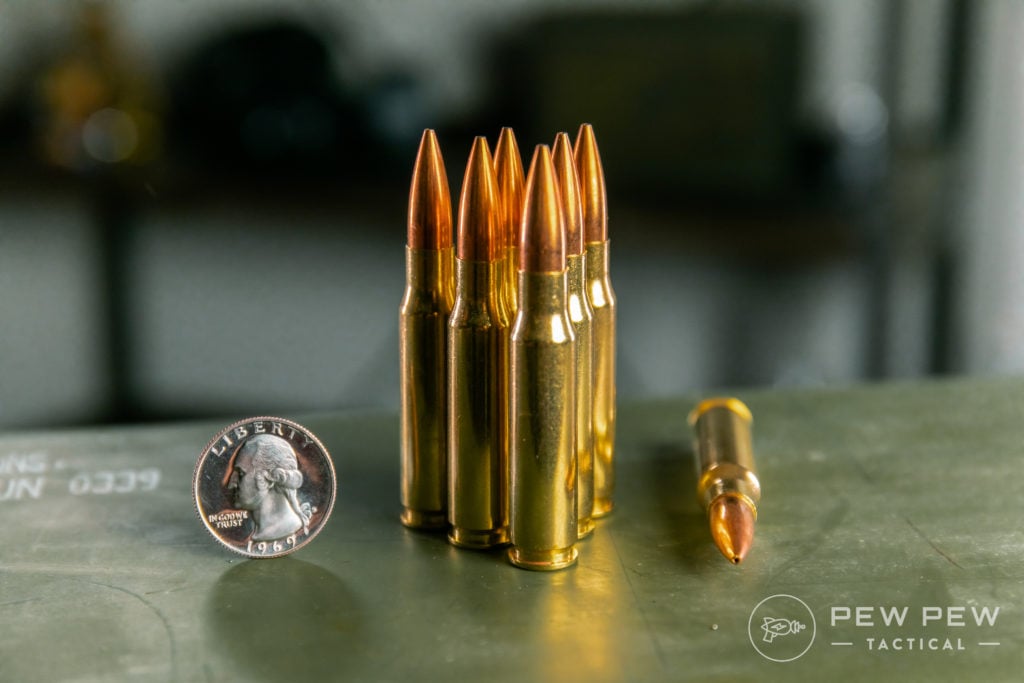
Today, you can most commonly find the CETME in the U.S. through Century Arms International in the form of the CETME Sporter.
This model is a civilian version made in the U.S. and is a decent option for a vintage battle rifle in the iconic H&K G3 format.
Prices accurate at time of writing
Prices accurate at time of writing
-
25% off all OAKLEY products - OAKLEY25
Copied! Visit Merchant
5. Heckler & Koch G3
Speaking of, the H&K G3 and all its many clones, copies, and homages is essentially an upgraded version of the CETME rifle.
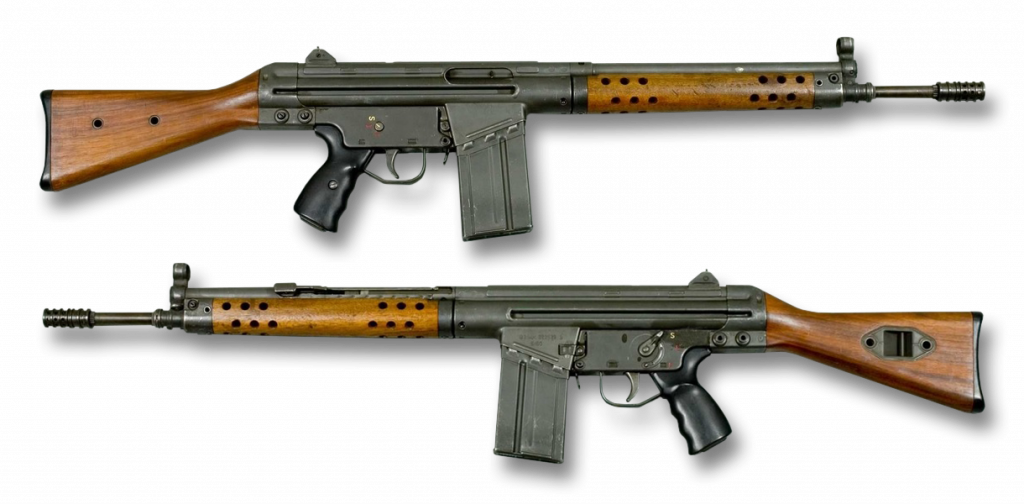
The H&K G3’s locking piece has been tweaked a little for extra reliability, and there are some differences in furniture.
Really, that’s all the difference, but sometimes that’s all it takes.
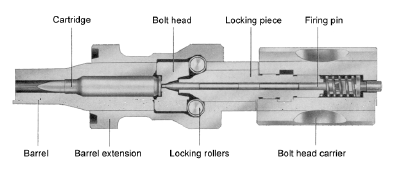
It comes chambered in 7.62x51mm.
Today, the rifle is still in production. It’s spawned a huge number of derivatives, some of which are civilian-legal here in the U.S.
For instance, the SR9 is the sporty U.S. version of the G3.
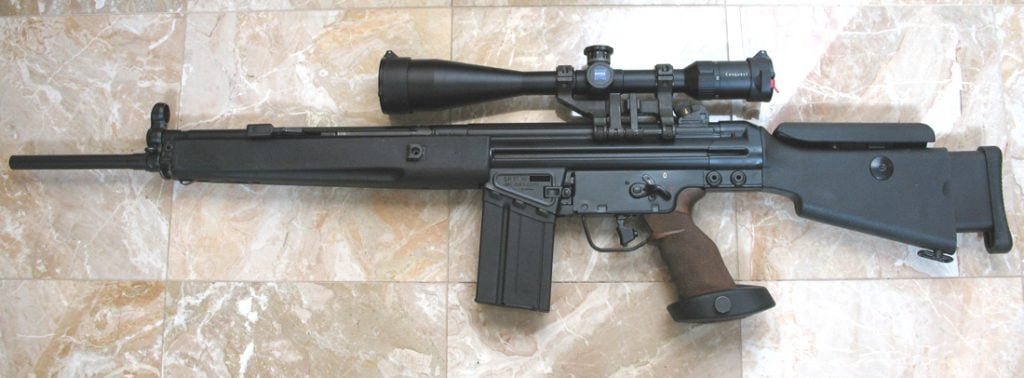
Meanwhile, the HK91 boasts a semi-auto design made to be U.S. compliant.
Prepare for some sticker shock, though. The SR9 retails for around $6,000.
Prices accurate at time of writing
Prices accurate at time of writing
-
25% off all OAKLEY products - OAKLEY25
Copied! Visit Merchant
6. Century C308
The Century C308 is the cheapest way, short of committing theft, to get your hands on an H&K G3 clone. (Also, stealing is bad, so, yeah, don’t do that.)
Technically it’s a clone of the CETME Model C manufactured by Century.
Chambered in 7.62x51mm, the C308 uses an 18-inch barrel. And it accepts both G3 and CETME mags.
Bonus, you get two 20-rounders with the rifle, so that’s nice.
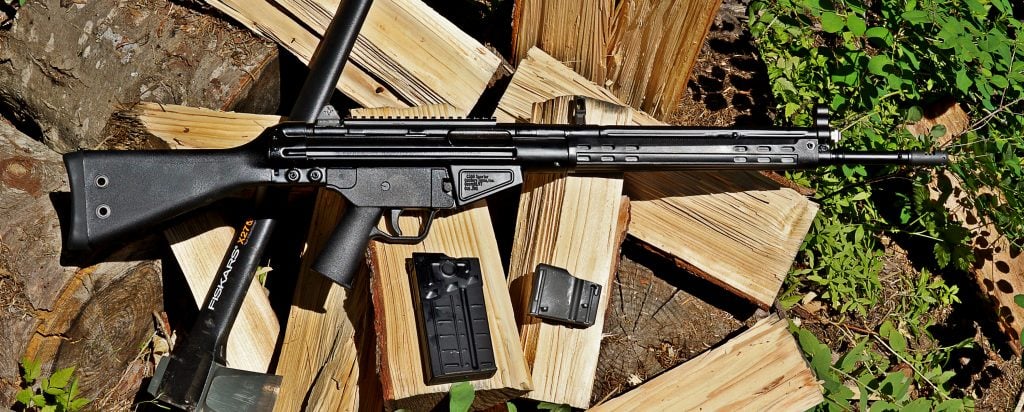
Using both new U.S.-made parts as well as older CETME original bits and pieces, you can find the C308 in the States.
It’s a solid rifle and a great budget choice at around $840.
Prices accurate at time of writing
Prices accurate at time of writing
-
25% off all OAKLEY products - OAKLEY25
Copied! Visit Merchant
7. Heckler & Koch 91
The H&K 91 is a semi-automatic version of the iconic H&K G3 still in use today.
All internal parts that allow full-automatic fire are removed. It also has a flange welded in place to prevent an automatic trigger pack.
This addition rendered the paddle-style magazine release non-functional. So, the magazine release was moved to the right side of the mag well.
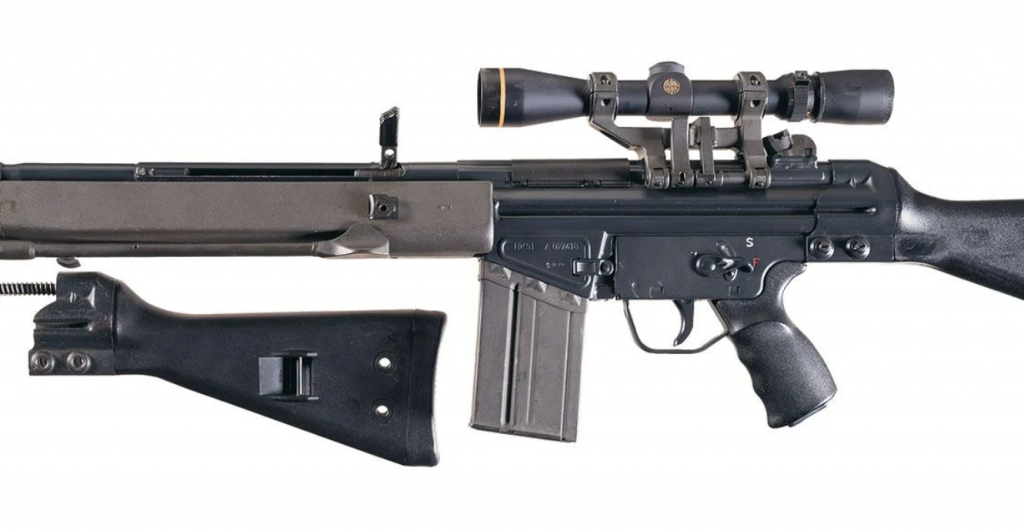
Other than that, it’s absolutely identical to the HK G3A3 — the most iconic G3 variant that began production in 1963.
The one problem: import of this rifle stopped in 1989.
So, there are a little less than 50,000 of them in the US. That’s all!
This makes them…pricey, to say the least.

Still, if you’ve got the cash, this is a truly excellent rifle that won’t let you down.
And it’s the best way to get a true G3 here in the U.S.
8. PTR 91
If you want to spend slightly less cash and get something that’s nearly as good, check out the PTR 91.
This rifle is a semi-automatic copy of the original G3 design. It uses some original G3 tooling from the FMP arms factory in Portugal.
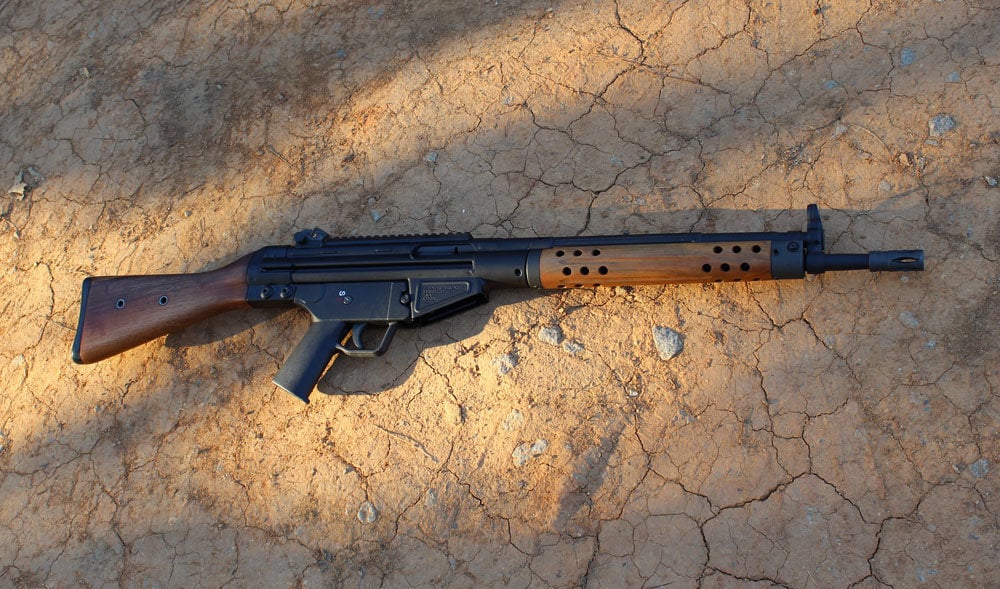
It measures 40.5 inches in overall length and weighs 9.5 pounds. With this model, you get either a 10-round or 20-round mag.
The PTR 91 is much higher quality than the Century C308. Hands down, it’s definitely the best clone of the G3 line out there.
So, this is the route we recommend if you aren’t quite prepared to shell out a few thousand for an original HK91.
Prices accurate at time of writing
Prices accurate at time of writing
-
25% off all OAKLEY products - OAKLEY25
Copied! Visit Merchant
And yes, we realize the CETME, C308, SR9, and PTR 91 are basically kinda the same but cut us some slack here. A list with only a few guns would just be boring.
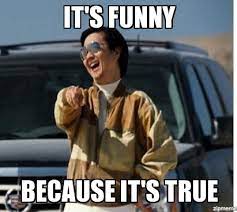
9. Heckler & Koch MP5
Next, the most recognizable roller-delayed blowback gun of them all…the H&K MP5.
The MP5 has seen use all over the world, particularly in the West. It’s also been used by everyone from James Bond to the U.S. Secret Service.
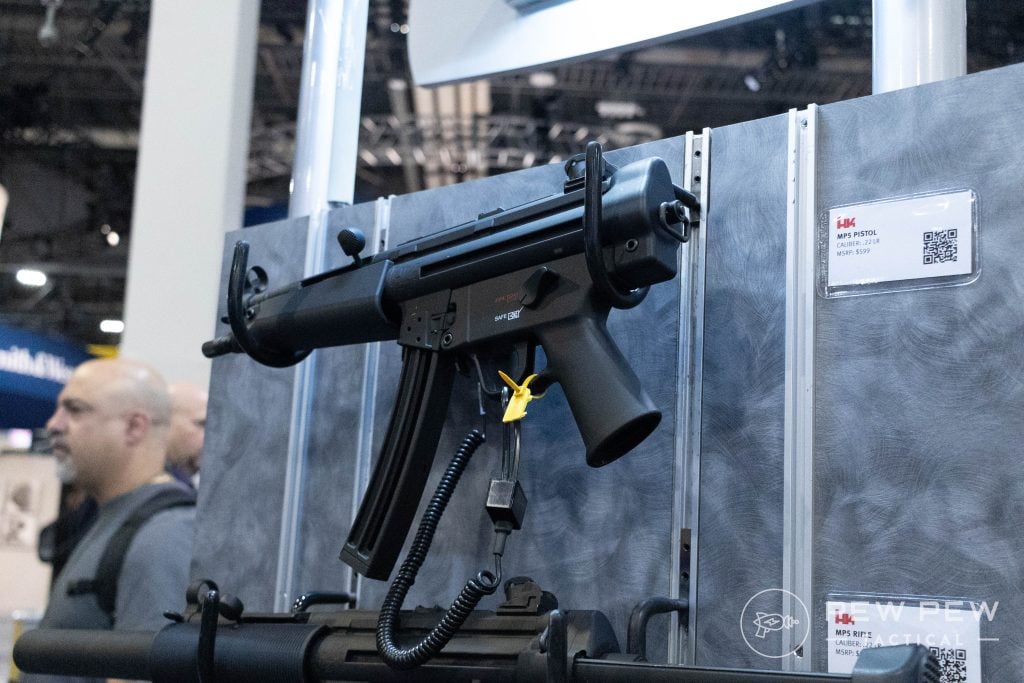
Sporting a 9mm SMG design, it accepts double-stack magazines and makes an ideal suppressor host.
This alone spawned the almost-as-iconic MP5SD, an integrally suppressed version.
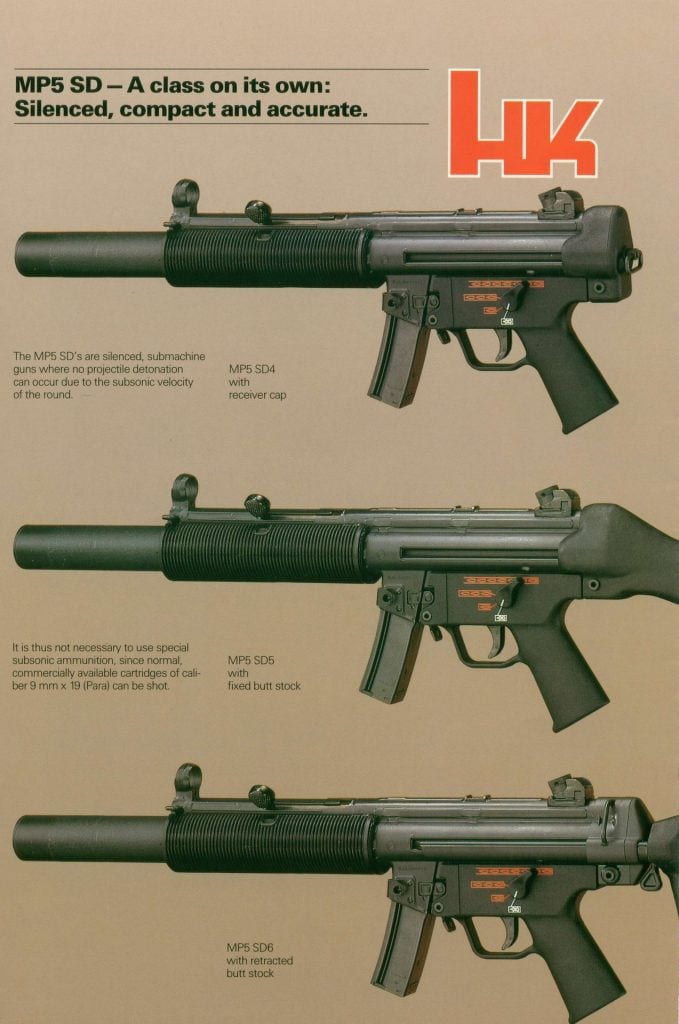
The MP5 also yielded the UMP. But as anyone who has ever handled this variant — or played Escape from Tarkov, Call of Duty Warzone, or any of the Rainbow Six games — can tell you, the UMP doesn’t quite measure up to the original.
Oh, and if you want one, good luck.
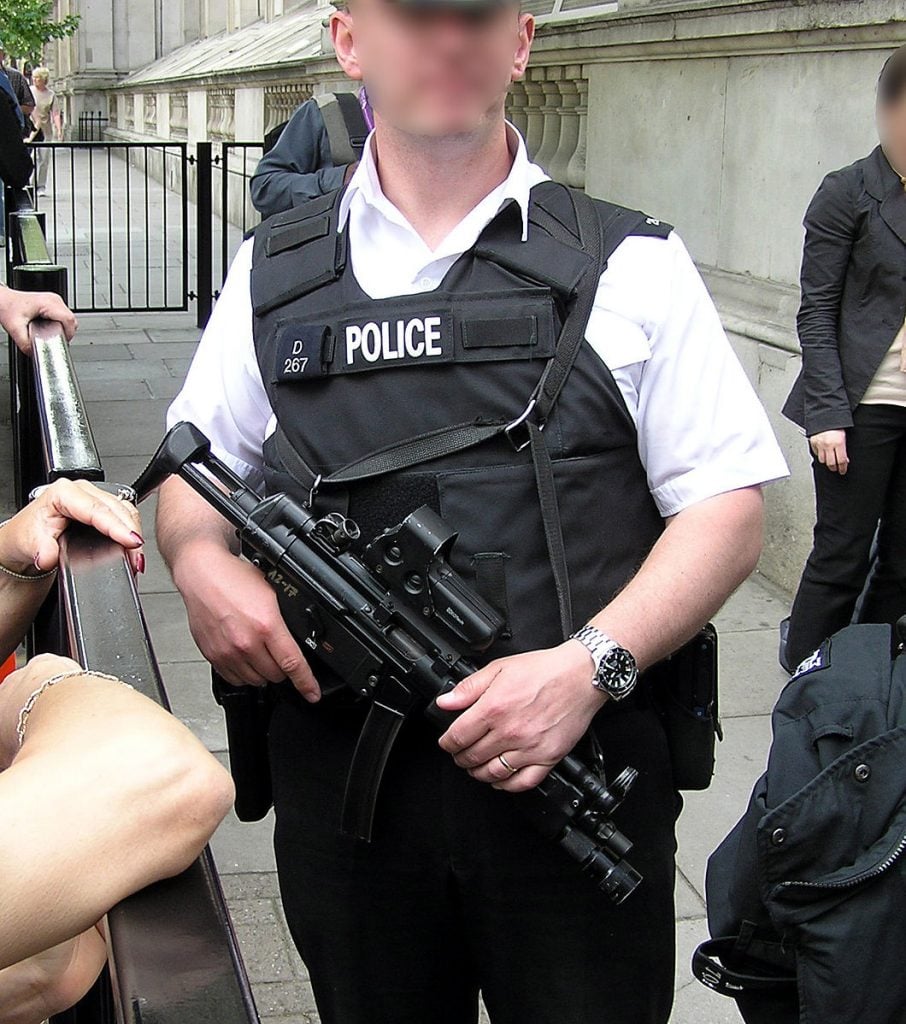
Transferable MP5s cost new car money and are rarer than hen’s teeth these days.
Patience, a tax stamp, and $40K will get you one…eventually.

Or you can buy a civvie version for much, much less.
The SP5 is a 9mm version sold in the U.S.
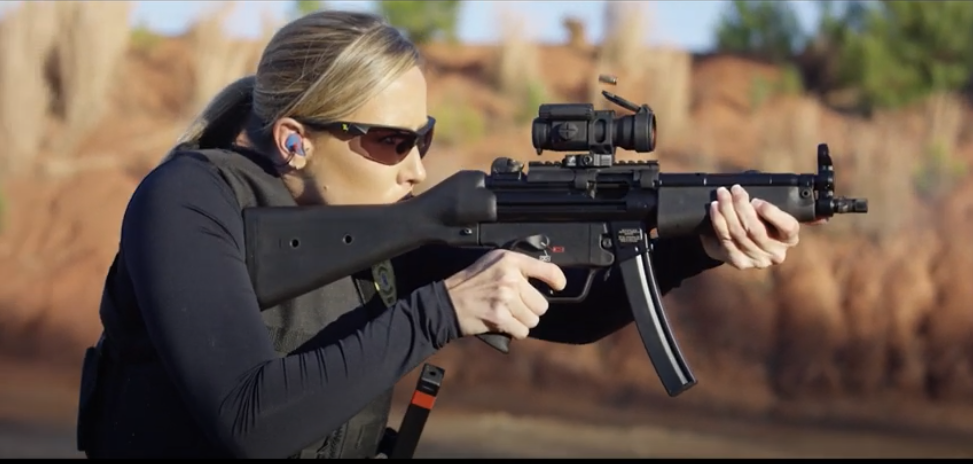
The SP5 comes with a high price tag but is still cheaper than the OG.
H&K’s SP5 uses a semi-auto design, so no tax stamp unless you go with the SBR variant.
Prices accurate at time of writing
Prices accurate at time of writing
-
25% off all OAKLEY products - OAKLEY25
Copied! Visit Merchant
10. PTR 9CT
PTR Industries swoops in to save the day with the PTR 9CT MP5.
This little guy is produced under license from H&K. It’s made in the States using primarily U.S. parts.
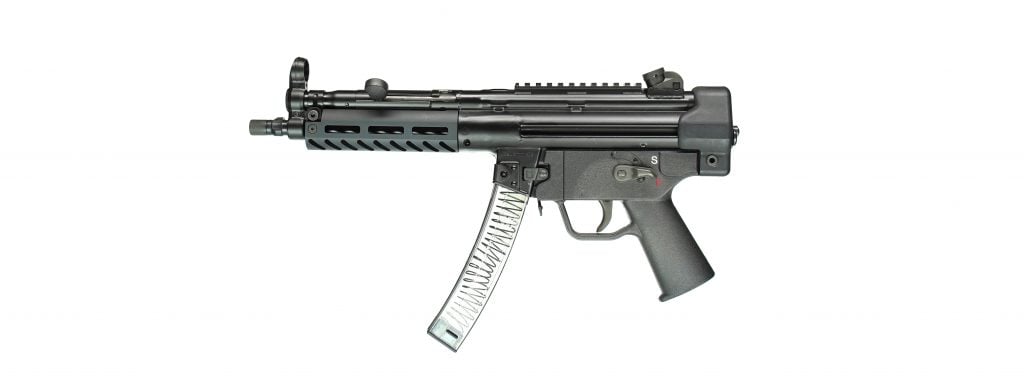
Chambered in 9mm, it’s a fun little gun, weighing in at just over 5 pounds.
It accepts MP5 mags and can throw 30-rounds downrange at a semi-auto rate.
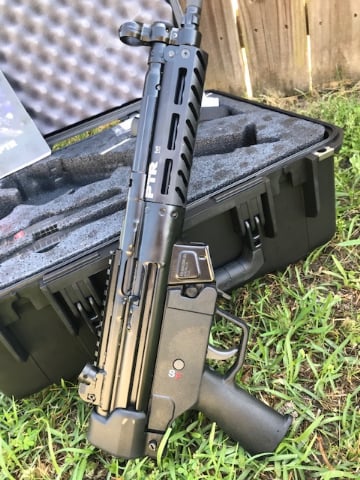
Quality comes down to effort, and the effort is here. Plus, the PTR 9CT MP5 offers a nice platform for us Americans made by the home team.
At around $1,900, it’s a lot cheaper than the true H&K version. That definitely doesn’t suck.
Prices accurate at time of writing
Prices accurate at time of writing
-
25% off all OAKLEY products - OAKLEY25
Copied! Visit Merchant
11. Dakota Tactical D54
Dakota Tactical is almost synonymous with MP5-style clones. Seriously, these guys know their stuff.
Offering numerous models dedicated to the roller-delayed action, you’re bound to find a variant that speaks to you.
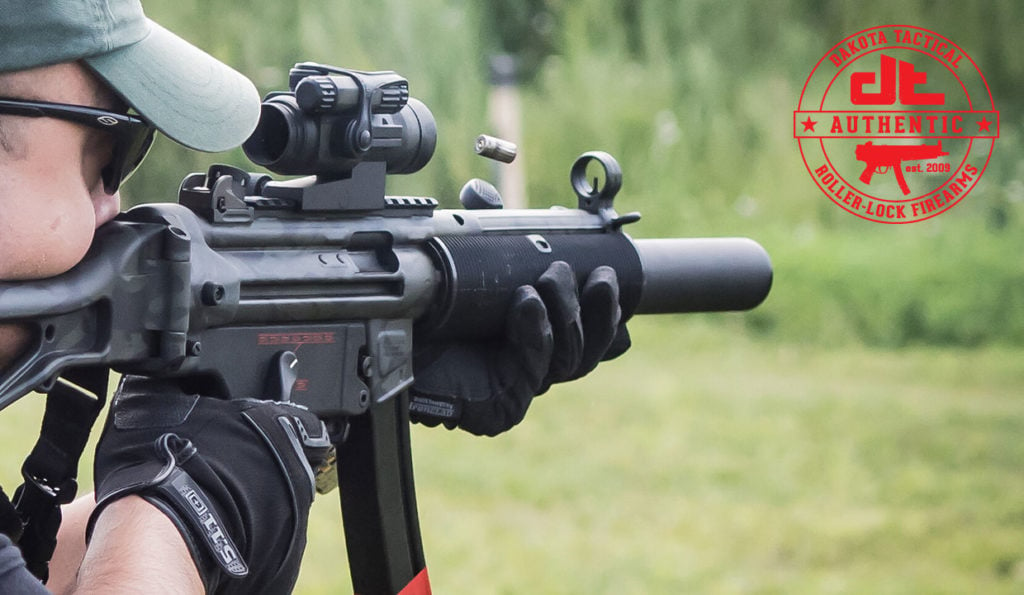
The D54 series brings a swath of sizes ranging from compact subguns up to full-size rifles. There’s something for the whole family here.
Assuming you have a chunk of change to burn, that is. What I’m trying to say is these MP5 clones aren’t what we’d call cheap.
Not that we’re surprised. Dakota Tactical makes some of the best clones out there. So, you get what you pay for.
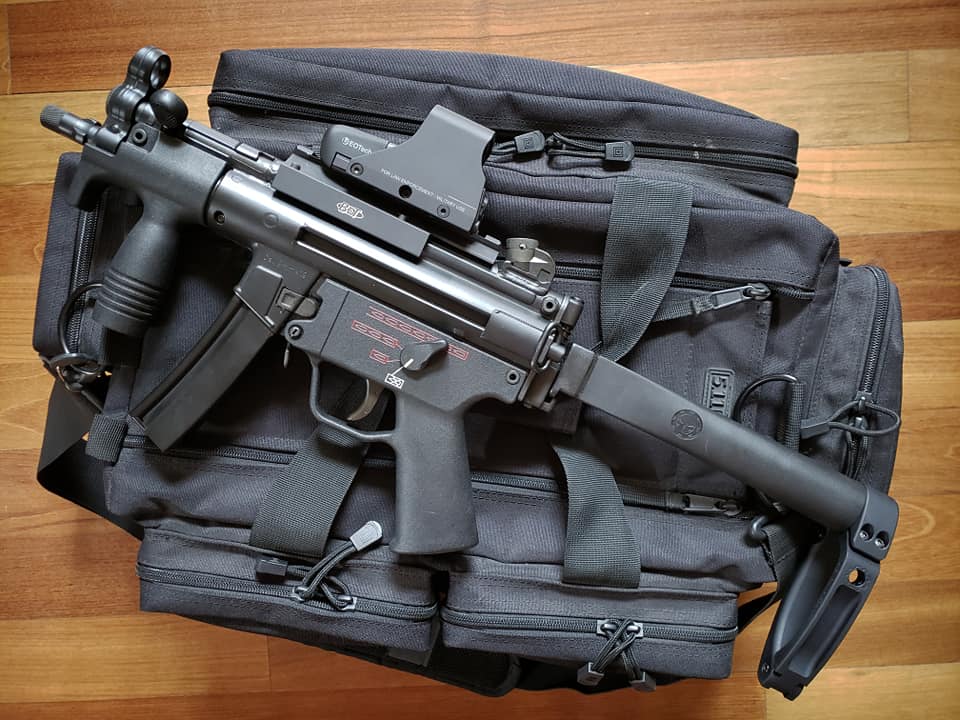
Prices start at $2,699 and top out at around $4,400.
Dakota is known for its excellent roller-delayed guns, so you can expect to get a quality gun. And that peace of mind alone is worth the money.
Prices accurate at time of writing
Prices accurate at time of writing
-
25% off all OAKLEY products - OAKLEY25
Copied! Visit Merchant
Own a Dakota Tactical Rollie? Rate it below!
Final Thoughts
Roller-delayed blowback firearms are a super neat part of gun history, with some noticeable benefits.
While they’re not as common as piston or DI gas guns, they hold a place in gun owners’ hearts for their reliable action and fun design.
What is your fave roller-delayed gun? Let us hear from you in the comments! Want to delve into the history of the MP5 a bit more? Check out our historical look at the iconic HK MP5 or see a compilation of the Best MP5 Clones.

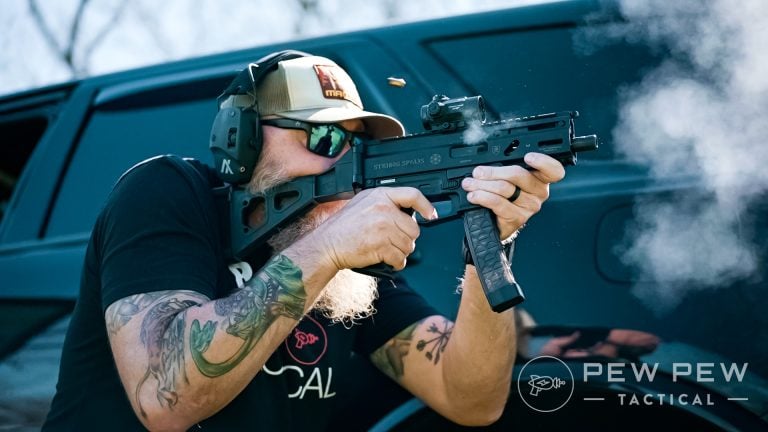









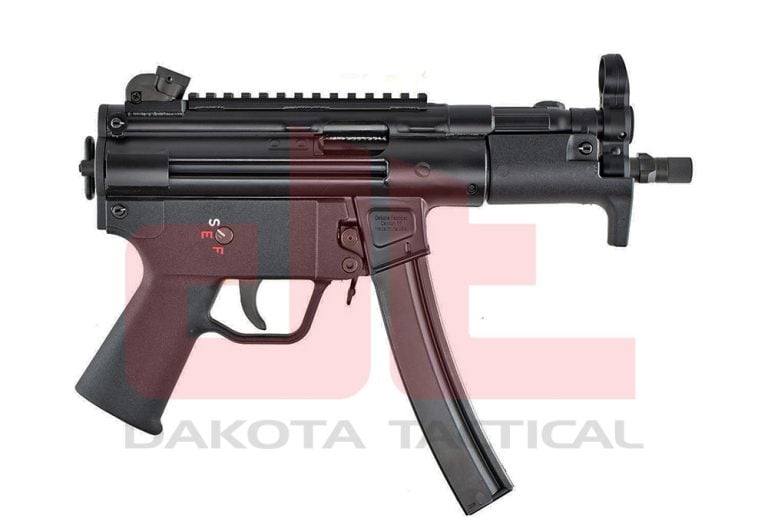

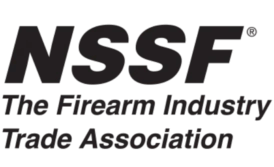











18 Leave a Reply
i feel for you having to deal with all these gun snobs, maybe thats why you have begenner th rough expert. so yall know who the smart a*%$s are lol, i think you did a very intertaining write up, some people have to showoff so feel all that...
I still cry when I think about having had a HK 91 and letting it go because I just didn't have a place to store it :'( I refuse to think about the IMI Uzi Model B Carbine I sold at the same time. Oh well, still have fond memories of those two wonderful works of art.
Isn't the Walther CCP a delayed blow back pistol?
JP’s JP5, and CMMG Banshee? Always having “best” in your title doesn’t mean you really know what the best really are.
Why no CMMG?
Great question. No CMMG just shows me the authors really aren’t very knowable about the subject.
Hey Barry, thanks for reading. We have limited space so we can't list every model out there, but we do update frequently -- especially when we get models in to hands-on test, so keep checking back! Thanks again!
Actually, that looks more like a Spanish Marine... I suppose I could be wrong....
Wish I could have a afforded the C308 just a very short few years ago when they were 650 new.
I purchased a PTR 9CT six months ago and absolutely love it. A really ‘cool’ gun which is surprisingly very reliable. Mounted a EOS on it and have a lot of fun shooting this at all types of targets. I have a suppressor on order now (which I’ll probably see in 2024) and really look forward to seeing how that total combo does!
I don't mean to sound like a dick, but you don't really know what you're talking about. Direct blowback isn't gas operation. Direct blowback is what most .380 pistols or .22 semi autos use. Secondly, delayed blowback guns are horrible for getting gas in your face since the chamber opens at such high pressures.
I was lucky to get one of the last two Z5rs in the country last year It came with an A2 stock The nice folks at Zenith really took care of me, doing a trigger job and painting the weapon for me (it was a SHOT show demo gun) It arrived in virtually new condition I run a Dead Air Wolfman on it and its a joy Zenith also sold me an A3 stock they had, even though it was listed out of stock on their site Could not be happier Only downside? Its registered as an sbr so I may have to worry about the goons knocking on my door some day
CMMG? They have one of the best.
Yep, love my Banshee Mk9 with 8" Barrel!
CMMG?
Does the Grandpower Stribog A3 roller delayed action count?
It does, and it's an excellent option! Midway in size between an MP5 and MP5K, it's actually a tad lighter than the K. It can also be had at half the cost of an MP5/K clone (under $700 without brace), or pay a bit more for the version which uses Glock magazines!
Hey guys i love each and every gun you mentioned with a notable mention for a couple! The Century C308 and the Heckler & Koch G3 as well as the Century CETME sporter. I recently purchased a pretty much all Odin works 9mm Carbine built locally by a gunsmith. I decided this time id like a .45ACP Carbine and went with the CMMG radial delayed blowback barrle/BCG combo from Primary Arms. I did also get a dedicated lower from a local gun shop that is just starting out making their own products like lowers and other parts. The upper is from a company your mentioned at Angstadt Arms.What im trying to figure out is since theres no gas system what do i plug the gas port with on the upper?lol Once i feel i have 100% of the parts im going to have my local guy build this one for me.hehe